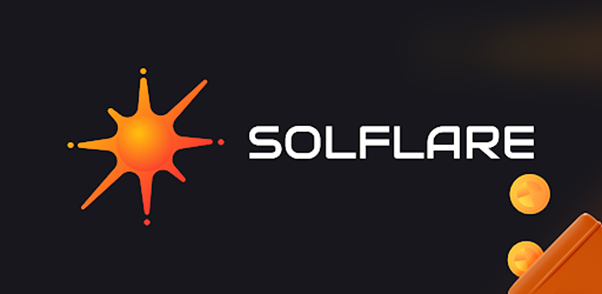Okay, so check this out—I’ve been messing around with Solana wallets for a while, and honestly, something about the whole hardware wallet integration just felt off with many options. I mean, you want security, but also flexibility, right? That’s a tough balance. And then I stumbled on the solflare wallet, which, for real, changed my whole approach to managing Solana assets.
Whoa! Ledger support? Yes, please. At first, I was skeptical. Hardware wallets often feel clunky—like they slow you down, or worse, don’t mesh well with DeFi apps. But Solflare nailed it. The integration felt smooth, almost effortless. You connect your Ledger, and bam, your keys stay offline while you interact with Solana dApps securely. It’s a relief knowing your assets aren’t just sitting in some hot wallet vulnerable to hacks.
Now, before you think this is just another plug for hardware wallets, hear me out. Solflare offers more than just Ledger compatibility. It’s like they really get the Solana ecosystem. Not only does it support all the usual stuff—sending, receiving, staking—but it also dives deep into DeFi features, which, honestly, is where many wallets trip up.
Hmm… here’s the thing—most wallets either go full-on simple or full-on complex. Solflare strikes a middle ground. You don’t need to be a blockchain nerd to use it, but if you are, you’ll appreciate the advanced functionalities. I remember fumbling with other wallets trying to connect to Serum or Raydium, but Solflare made it feel natural.
So, what’s the catch? Well, sometimes the UI feels a bit cluttered, especially if you’re new to DeFi. There’s a learning curve, but I guess that’s the price you pay for power. Actually, wait—let me rephrase that. The complexity is manageable if you take your time, but jumping head-first might overwhelm you.

Ledger Support: Why It Matters for Solana Users
Seriously, Ledger hardware wallets have been the gold standard for crypto security for years. Why? Because your private keys never leave the device. That’s huge. Even if your computer is compromised, your crypto stays safe. Now, Solana’s blazing speed means you want a wallet that can keep up without compromising on this security. Solflare does exactly that.
Initially, I thought hardware wallets would slow down my DeFi trades or make staking tedious. On one hand, you want airtight security, but on the other, you want to move fast in the market. Though actually, Solflare’s implementation surprised me. It’s responsive and the transaction signing process with Ledger is quick enough not to kill your momentum.
Here’s what bugs me about some wallets: they pretend to support Ledger but require awkward workarounds or third-party apps. Solflare stays native. It’s built with Ledger in mind, which shows in the seamless experience.
I’m biased, but for anyone dabbling in Solana DeFi, this integration isn’t just a nice feature—it’s a necessity. Your DeFi portfolio deserves that extra layer of protection, especially with the rising number of exploits and phishing scams targeting hot wallets.
Exploring Solana DeFi Through Solflare
Okay, so diving into Solana’s DeFi scene—man, it’s exciting but also a bit of a wild west. New protocols pop up daily, and managing your assets across multiple platforms can get messy. That’s where a wallet like Solflare shines. It acts like your control center.
For example, staking SOL directly from the wallet interface is super convenient. And when you want to participate in liquidity pools or yield farming, Solflare connects you without jumping through hoops. Really, the ability to interact with Serum, Raydium, and other DeFi protocols inside one wallet cuts down on errors and frustration.
Something I noticed is that Solflare updates often, which means they’re actively working on new features and bug fixes. That’s comforting because in DeFi, things are moving fast and you don’t want to be stuck with a wallet that feels abandoned.
That said, not every DeFi app is fully supported yet, so sometimes you might have to resort to other tools. But overall, Solflare’s roadmap looks promising, especially with their community-driven approach.
Oh, and by the way, if you’re worried about privacy, Solflare doesn’t ask for KYC, which is refreshing in a space where over-regulation is creeping in.
Why I Keep Coming Back to Solflare Wallet
Here’s the thing—I’ve tried countless wallets for Solana, but Solflare keeps pulling me back. It’s like that dependable friend who’s got your back when the market’s volatile. The Ledger support seals the deal for me, no doubt. It’s the peace of mind you don’t realize you need until something weird happens.
And I’m not saying it’s perfect. The occasional UI lag or confusing feature can throw me off. But honestly, the pros outweigh the cons by a wide margin. Plus, the fact that it’s open-source and community-focused makes me trust it more than closed, opaque wallets.
Since integrating my Ledger with Solflare, I’ve felt more confident jumping into DeFi projects. No more second-guessing if my keys are safe or if I’m exposing myself to unnecessary risks. That’s priceless in crypto.
Check this out—if you want to test it yourself, just visit the official solflare wallet page. The setup tutorials are clear and the interface is pretty welcoming once you get past the initial learning curve.
FAQs about Solflare Wallet and Ledger Support
Does Solflare support all Ledger models?
Most recent Ledger devices like Nano S and Nano X are compatible with Solflare. Just ensure your Ledger firmware is up to date for the smoothest experience.
Can I stake SOL directly through Solflare with Ledger?
Yes! Solflare allows you to stake SOL right from the wallet interface while keeping your private keys secure on Ledger.
Is Solflare suitable for DeFi beginners?
It’s a mixed bag. The wallet is user-friendly but DeFi itself can be complex. If you take your time, Solflare can be a great gateway into Solana’s DeFi world.


Write a comment: